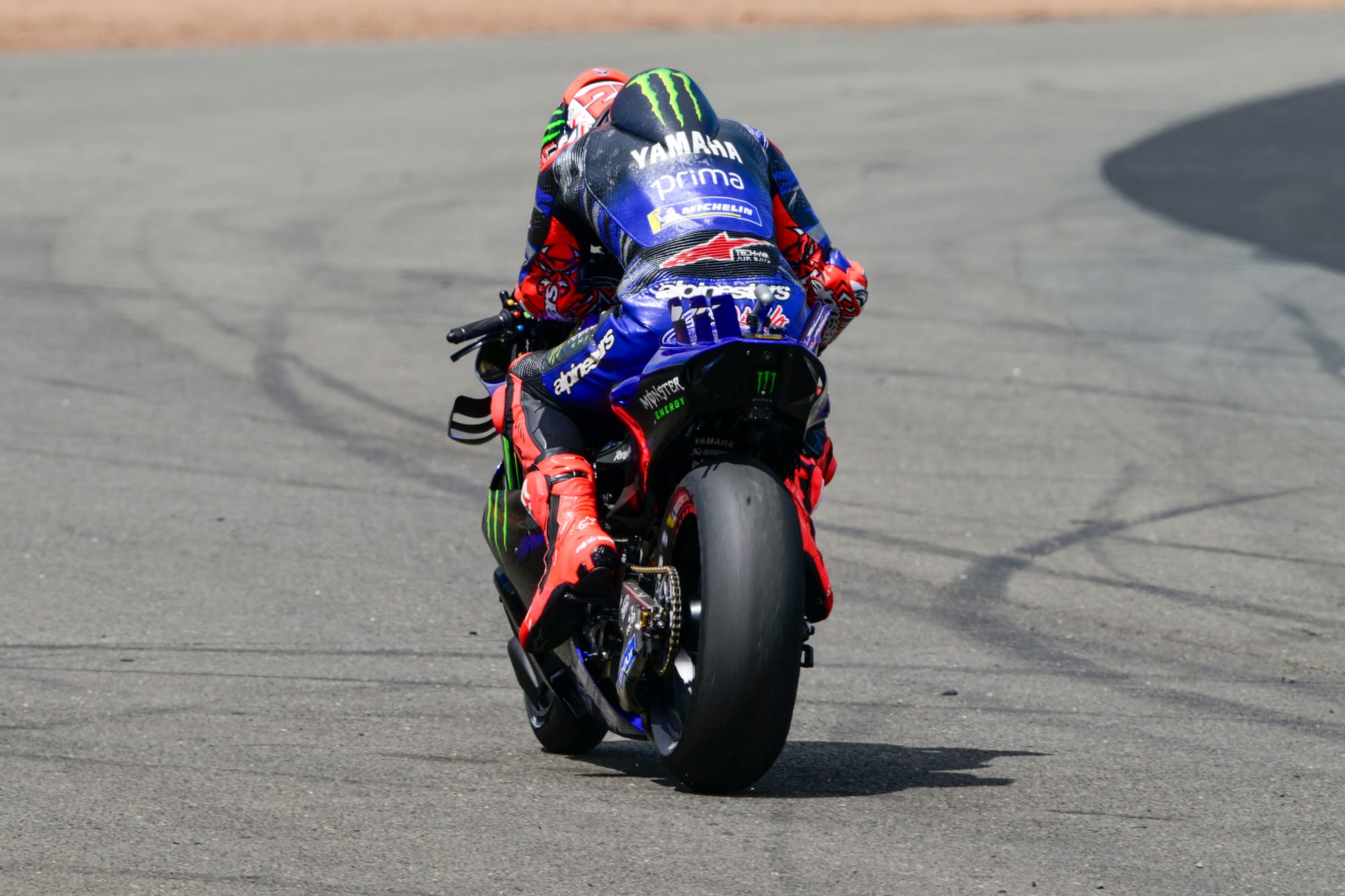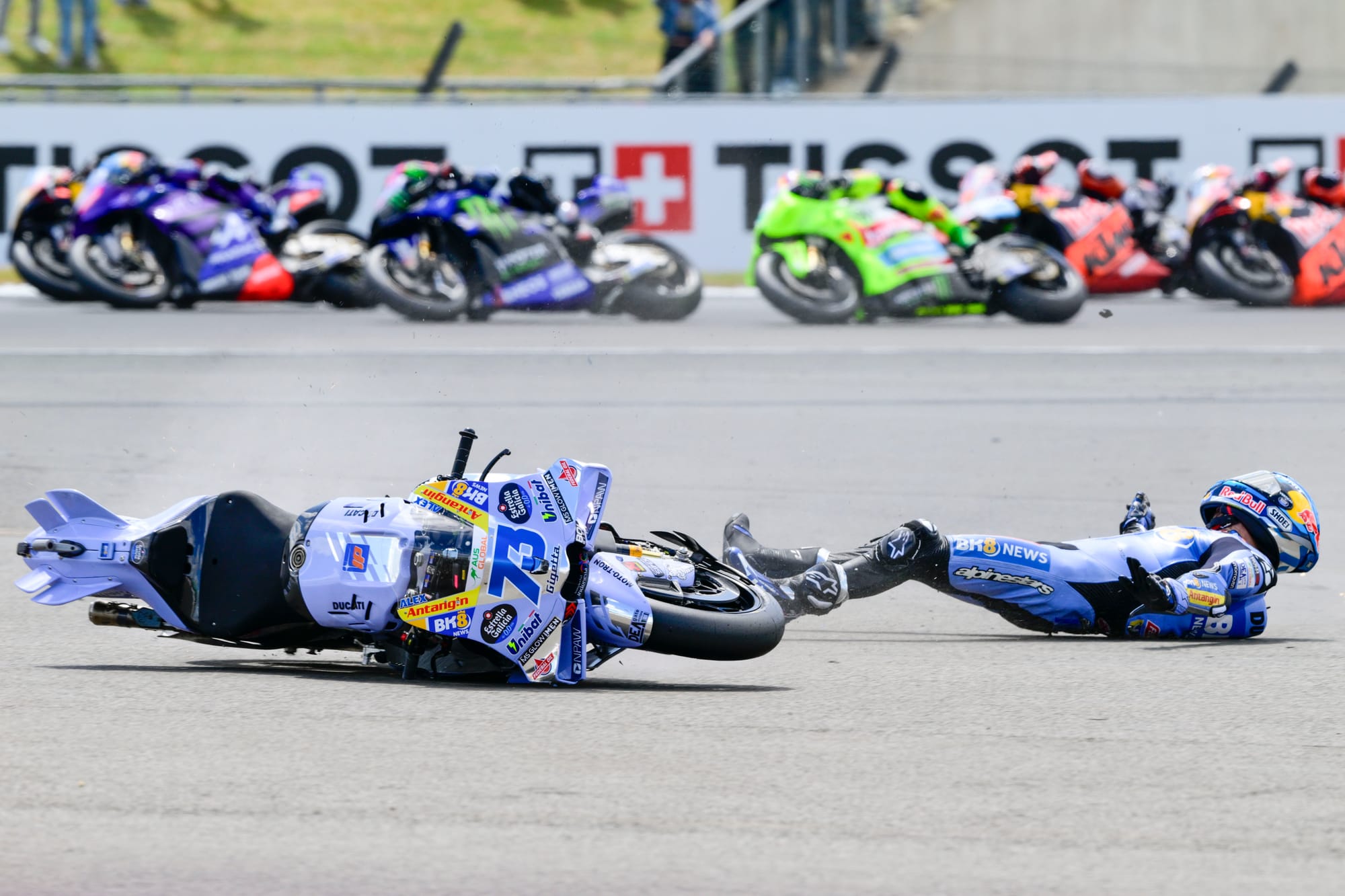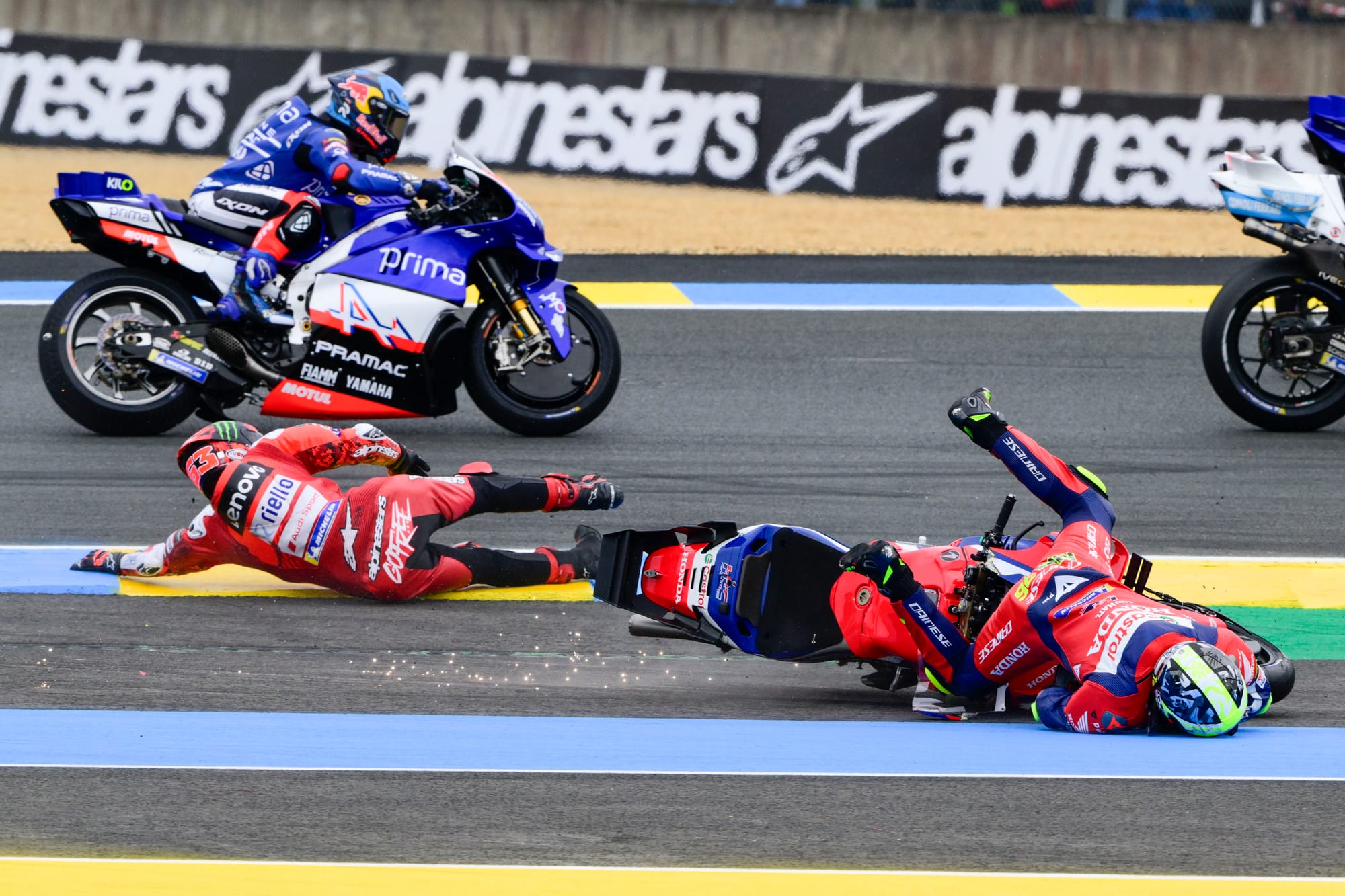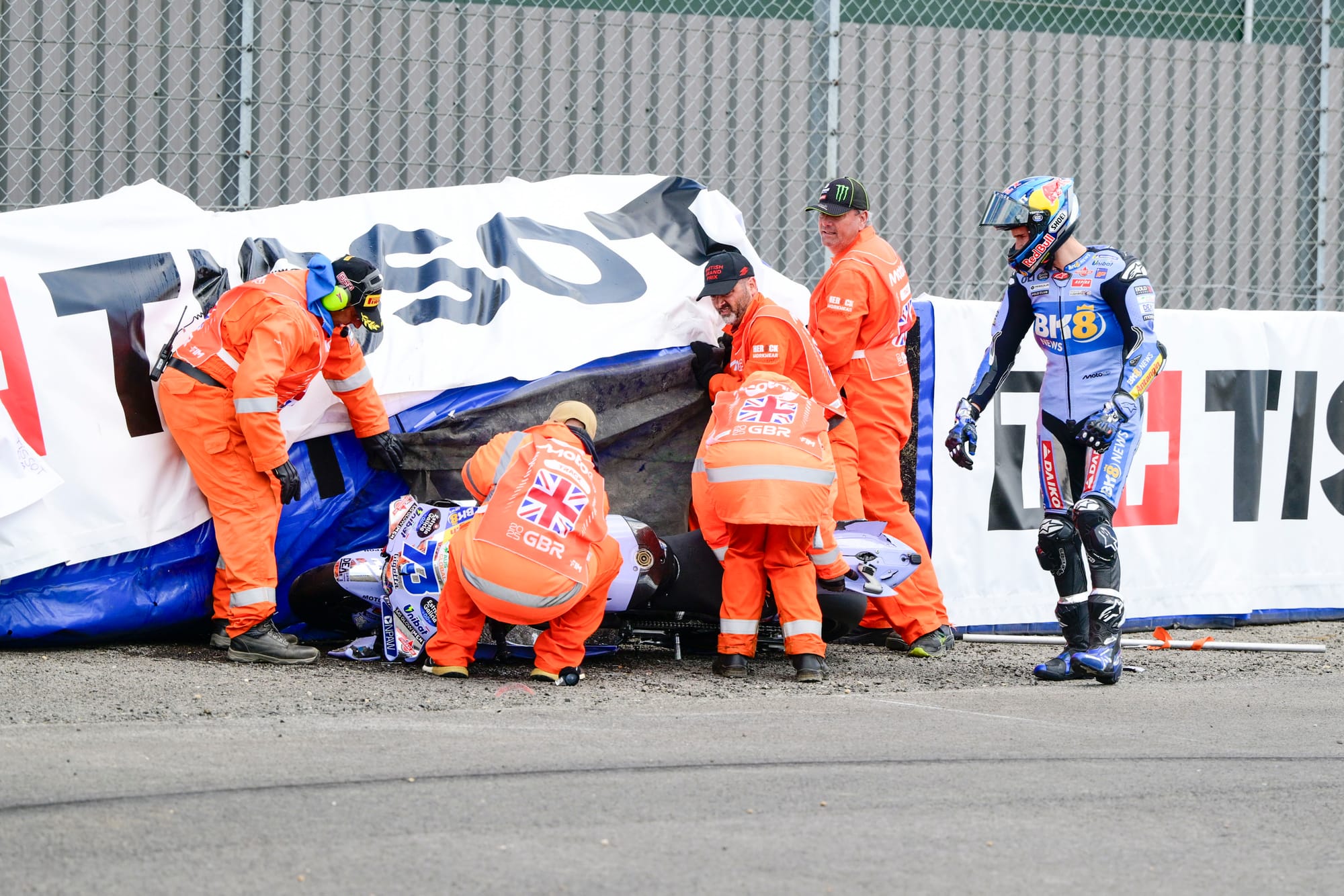From 2027, both front start devices and rear ride-height devices will be banned from MotoGP as part of the broad new rulebook.
But, with both devices causing more and more incidents and accidents and with last weekend's British Grand Prix at Silverstone really highlighting how much risk they add for little gain, it's time for organisers to take a stand and remove them right away.
First introduced at the end of 2017 and since then pretty much revolutionising the design philosophy of MotoGP machines, the rear ride-height devices essentially alter the geometry of a bike when riders exit a corner, allowing racers to drop the bike, lock it there, and use their new, longer bikes like drag machines.
But as teams are banned from using electronics to make that work, they have been forced to use complicated engineering to pull the trick off. The devices are essentially hydraulic computers and there's lots of opportunity for failure - something that we've seen on a regular basis.
And when they do fail, it tends to end a rider's race. With the device sitting between the suspension and the swing arm, when they stop working the bike tends to stay low and unsteerable through corners, as well as potentially leaking oil onto the rear wheel because of where they're situated.
Front start devices, on the other hand, are much more basic. Basically just a set of interlocking hooks on the front forks, they allow riders to slam on the brakes on the grid and lock the front down to significantly reduce wheelie off the line.
The hooks then release - or at least they're supposed to release - when riders brake for the first corner. But we've seen plenty of situations where that hasn't happened, meaning that you suddenly find yourself mid-pack and essentially without front suspension - another recipe for disaster.

Of course, the headline news from Silverstone will of course be Fabio Quartararo's rear device failure that ended his very high hopes of a first race win 1071 days. Left heartbroken on an unrideable bike while pulling away from the field, the scenes of him bawling his eyes out by the side of the track should send an important signal to MotoGP bosses about the value of the devices.
He wasn't the only rider to suffer similar problems during the Silverstone weekend, though. His Yamaha team-mate Alex Rins had an issue with his device on the final lap too, while other riders were forced to take avoiding action to dodge Franco Morbidelli when the device on his VR46 Ducati went wrong in Saturday's sprint.
Of course, we never quite know for sure what causes technical DNFs, with teams remaining tightlipped about failures - but it's not an exaggeration to suggest that as many as 75% of breakdowns in modern MotoGP are linked to ride-height devices, potentially robbing us of many moments like that Quartararo win.
Professional sport is, at the end of the day, an entertainment product. Yes, we're all here to see competition happening - but no one wants to see riders robbed of success by something outside their control.
There is of course a role for engineering innovation in MotoGP - it's a huge part of the sport. But we've found ourselves in a place where engineers write the rule book and series promoter Dorna has little say in what's allowed.
There's a lesson to be learned from Formula 1, where organisers move quickly to strike down new technology where necessary. Innovation is allowed, but if that innovation is ultimately felt to be problematic it's only allowed until the end of that season so that a problem doesn't escalate and teams don't get into a spending war over it. So any team that has brought new parts that F1 feels take things in an unhelpful direction still benefits from its ingenuity, but only for a limited period.
Announce a similar plan now for 2026 and MotoGP would be in a better place.
The biggest issue isn't with the rear ride-height devices, it's with the front start devices on the other end of the bike, given their potential to cause first corner chaos when they don't release.

That was the cause of Alex Marquez's crash out of the lead at the initial British GP start last Sunday.
MotoGP got lucky that he was in first place at the time and able to slide cleanly away. Had he been on the inside line mid-pack, then the results could well have been utterly catastrophic.
A ride height device was also the cause of the first-lap crash at Le Mans last time out when Enea Bastianini hit Pecco Bagnaia and took out Joan Mir.

Banning the device at some circuits where you lose less brake into the first corner (potentially increasing the chances of the device sticking on) is something that riders have already been talking about among themselves, according to Alex Marquez after his crash.
"We need to check and be realistic, especially the riders," he replied when asked about a ban by The Race afterwards.
"I think it's not necessary to ban them in all the tracks, but maybe in some tracks.
"This track normally isn't dangerous, not like Le Mans. In Le Mans they need to be banned. I'm 100% agreed on that."

If they're not safe at some circuits, then there's an argument that they're not safe at any circuit. Ban them now, make MotoGP safer, and add more skill back into the race starts at the same time. It's a win all round, for everyone except engineers.
And the best thing about banning them right now? It requires zero bike modification. No one needs to redesign their machines to work without them, they just need to be banned and removed.
And there's absolutely no reason why that shouldn't be done before the next round at Aragon next weekend.



